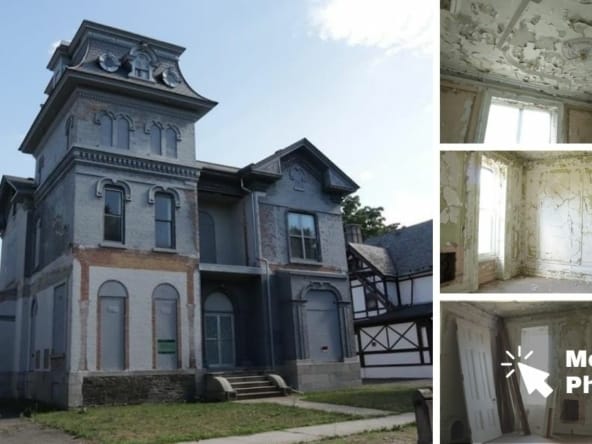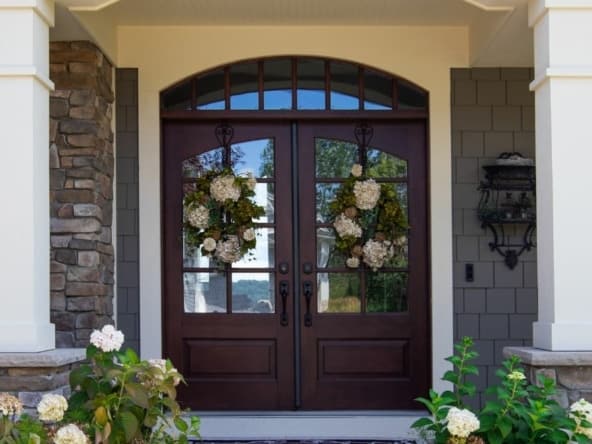Merriam-Webster defines a “money pit” as “Something that uses up a very large amount of money.” Usually that something to which “money pit” refers is a house that needs expensive repairs.
The 1986 movie “The Money Pit” starred Tom Hanks and Shelley Long as a couple who bought a grand old home with character and a long list of needed repairs, with comic results.
Dealing with a real-life money pit is no laughing matter, as any owner of one can tell you.
8 Signs a House Could Be a Money Pit
If you’re looking for an older home, watch for signs of it being a money pit, although newer homes can have many of these expensive problems too. These money pit symptoms include:
1. Cracks in the Walls
Are your doors opening by themselves? A foundation problem may haunt your house. Cracks in walls, slanted floors, and doors that won’t shut right can signal a need for foundation work, which can cost as much as $25,000 or more, depending on how severe the problems are.
2. Burning Smells
Sometimes a burning smell is normal, for example, when the heat gets turned on for the first time in the fall. However, at other times, a burning odor can indicate electrical problems or even a need for rewiring. In older homes, this can be an expensive issue.
3. Wobbly Toilet
If you’re considering the purchase of an older home, sit on the commode whether you have to go or not. A toilet that wobbles with pressure is a symptom of weaknesses in the subfloor. In severe cases, the floor could give way, putting a second-floor bathroom on the first floor.
4. Mold Infestation
A money pit house may make you feel sick both literally and figuratively. When mold spores meet leaks, mold will grow under your roof, in walls, ceiling tiles, insulation, and other cracks and crevices.
Mold remediation is the only choice, as is replacing all the building materials where mold grew. Mold can cause anything from allergy symptoms to severe respiratory illness.
5. Asbestos
Newer homes don’t contain asbestos, but asbestos might be in the building products and insulation in homes built before the 1970s.
Old floor tiles, insulation around furnace ducts, door gaskets in furnaces and wood stoves, decorative materials sprayed on ceilings, roofing, siding, and fake embers for gas-log fireplaces are a few of the spots where asbestos might be in an older home.
If the materials are in good condition, they won’t make you ill, but if fibers from asbestos are loose, inhalation will increase the risk of lung cancer and mesothelioma.
6. Termites
Your home might be somebody’s lunch without you knowing it. Subterranean termites, the cause of about 95 percent of termite damage in the U.S., can destroy wood, support beams, foundations, and plastic pipes.
Getting rid of termites can cost $1,000 or more, but the structural damage they cause can be much more expensive in the long term.
7. Warped Walls and Floors
Look around areas where appliances connect to plumbing, such as the kitchen and bathroom. Warping of walls and floors can mean there’s been water damage. Ultimately, the water leak will need repair.
8. Water Stains on the Ceiling
A ceiling with large, brown water stains is more than unsightly. Those stains signify that the house has a leaky roof that may need replacement. A new roof can cost about $8,000 to $11,000, depending on size and the materials used.
When Do Expenses Outweigh Benefits?
You may have found an older home with plenty of character at a low price and think you have a bargain until you find out just how many essential repairs it needs. How much of a money pit can a house be and still be worth repairing? That’s a question only you can answer.
If you are thinking of buying an older home to flip or use as a rental property, you’ll have to make structural repairs to meet codes and aesthetic changes to sell or rent the house. If you find you can’t recover the costs, the project is likely too much of a money pit to be profitable.
However, if you inherited family property, making repairs may be less painful since preserving the home is the goal.
How to Finance Money Pit Repairs
Coming up with thousands of dollars for home repairs isn’t easy, but there are a few ways to finance repairs for your money pit. They include:
Cash-Out Refinance
Figuring the cost of repairs into a mortgage refinance can provide you with funds for needed repairs. Spread out over 15 or 30 years, it can amount to a minor increase from your current mortgage. If you manage to refinance a mortgage at a lower rate, your payment may be close to the same amount you’re already paying.
HELOC
A home equity line of credit is a revolving credit account, meaning you can take the money when needed. Be aware that your house is the collateral in a HELOC, so if you don’t make your HELOC payments, the lender could foreclose on your house.
Home Improvement Loan
Home improvement and home equity loans are other ways to finance home repairs. A home improvement loan is unsecured and usually for less than $100,000. Home equity loans, which tap into home equity, are typically for larger amounts.
Key Takeaways
If you own a money pit house, you may feel like you’re just throwing money into an abyss. The average whole-house renovation can cost as much as $200,000, possibly more than the price of the house itself.
Making sure a money pit is up to code and is a healthy place to live is essential. Consider this if you’re in the market for a home, as the costs of repairs may make a lower-priced home less of a bargain.




